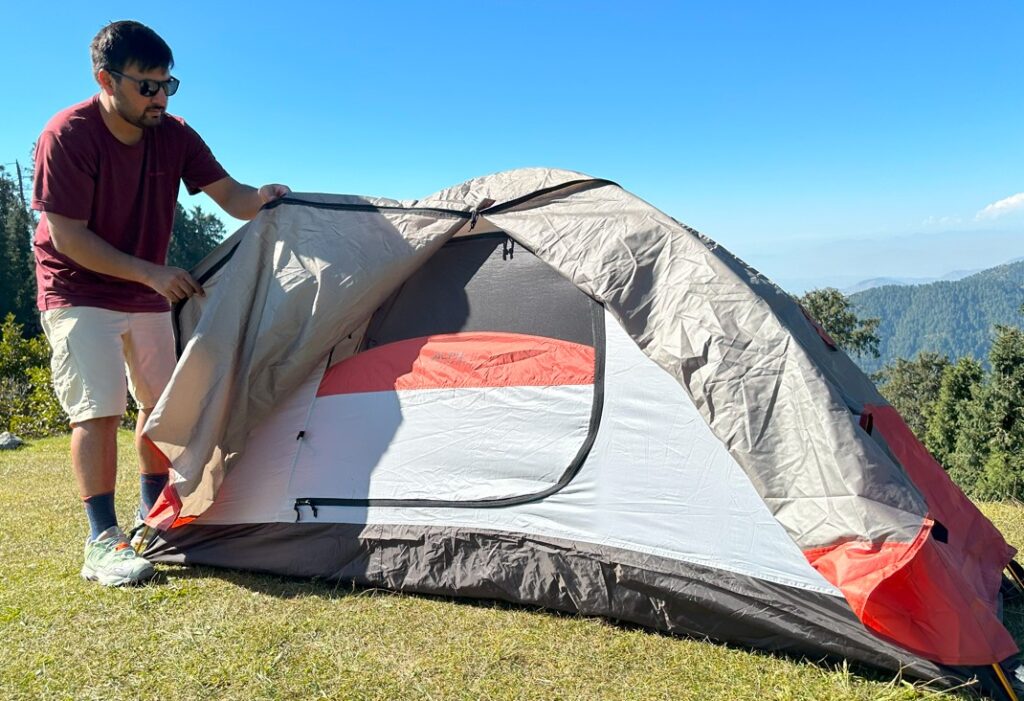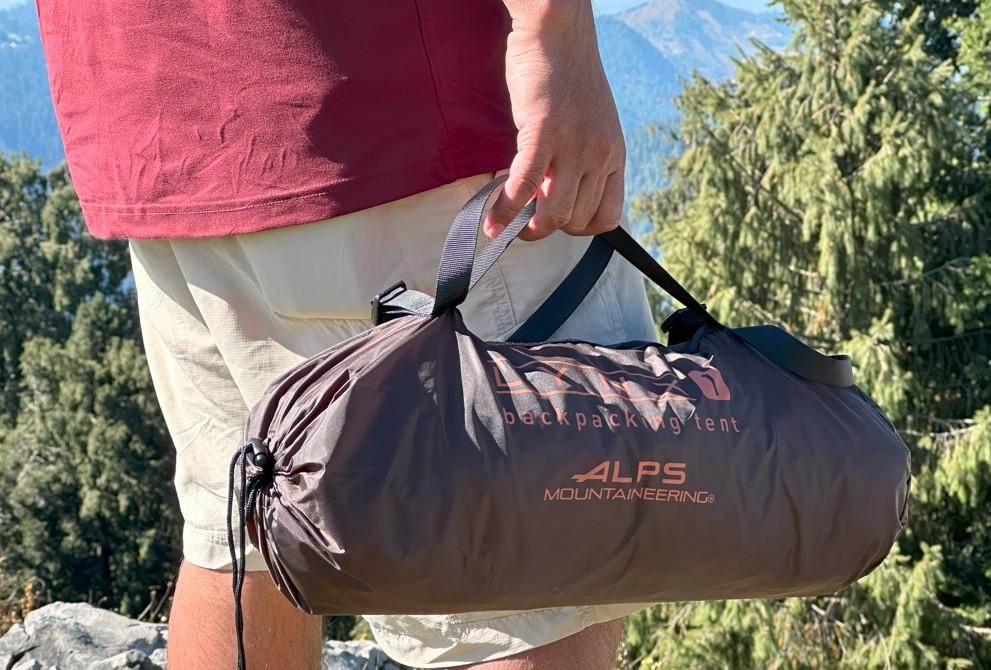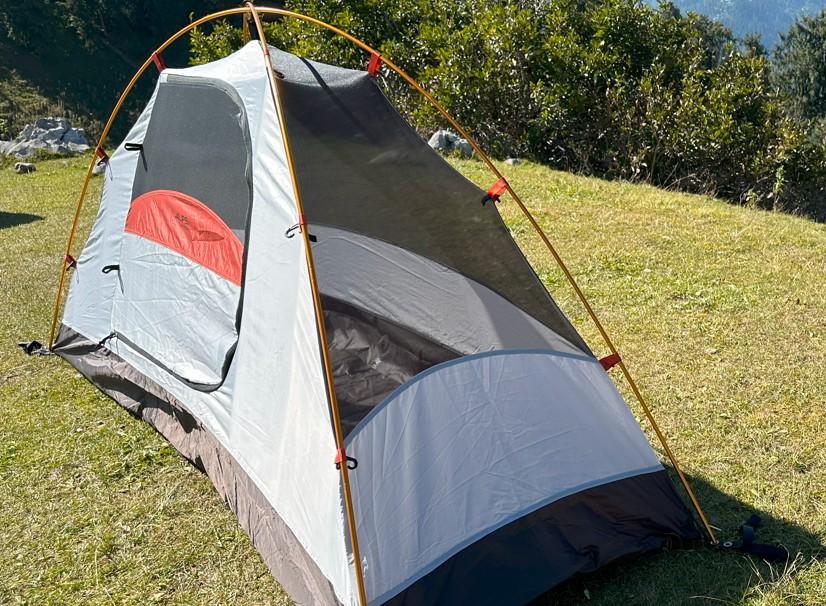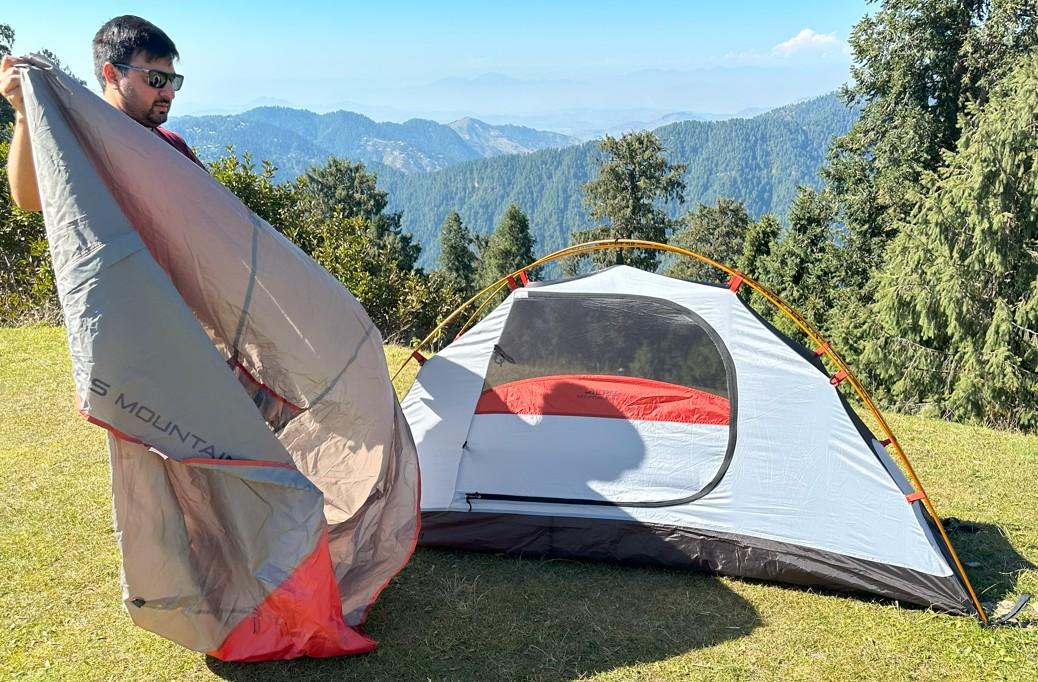Tents are one of the most important elements of an adventure. If you are a backpacker or an adventurer, information about the right kind of tent must be a priority for you. In adventure sports, 3- and 4-season tents are popular among adventurers. As the name suggests, manufacturers design 3- and 4-season tents to withstand different natural seasons, respectively. These names indicate the number of seasons these tents are usable in a year.
Related: ALPS Mountaineering Lynx 1-Person Tent Review
Apart from other gear for adventure, if the tents do not meet the requirements of the expedition, it might lead to complications. You can classify and choose these tents by considering their weight, space, durability, and insulation qualities.
What is a Three-season Tent?
Definition
The 3-season tent is lightweight, durable, breathable, and has good ventilation. Adventurers use it for summer, spring, and autumn. Manufacturers make these tents to protect against bugs, light rain, heat, wind, and mild weather conditions.
These are double-walled tents; however, single-walled tents are also promising in this category. Evident from the name, a 3-season tent is not recommended for all-season adventures.
Features and Best Use Cases
A manufacturer builds a 3-season tent with lighter and more flexible fabric. More accurately, these tents are made with synthetic fibers like nylon and polyester. This composition makes these tents breathable and lightweight.

Additionally, there are mesh panels for ventilation, which make these tents even better and more comfortable. Considering their composition, you can only use these tents in mild to moderate wind and rain.
It is a revered choice of backpackers, hikers, or people who go for general summer camping in the woods. Considering everything, you can use a 3-season tent only for mild weather and small adventures.
What is a Four-season Tent?
Definition
These are all-weather tents, prominent among hikers and adventurers by the name “winter tent” because of their insulating structure, which keeps its users warm. This tent is appropriate for heavy rainfall, snow, and strong winds, making it a better choice for climbers and explorers on expeditions.
Features and Best Use Cases
As for the structure, these tents are stronger, as discussed above. Their frame is sturdier and stronger with a robust shape. This structure makes them an apt all-weather shelter for the heavy snows, strong winds, and freezing temperatures.
The fabric used has less mesh, which makes it warm and cozy but heavier than an ordinary tent. It has solid panels, which add to the strength of the structure. These characteristics make it preferable for high altitudes, harsh weather, and unfavorable conditions.
Four-season tents are a nicer choice for mountaineers, alpine expeditions, and the wild outdoors.
3-Season vs 4-Season Tents Differences
Weather Protection
Designers create 3-season tents for mild weather conditions like summer, spring, and fall. Manufacturers make these tents from water-resistant fabric, tape the seams, and provide rainfly coverage. 3-season tents protect against moderate weather, like rain and wind. But they can’t handle harsh conditions.

In comparison, manufacturers design 4-season tents for harsh weather conditions. Sturdier material gives them firm support in heavy winds, snowfall, heavy rains, and freezing cold. They are completely encapsulated, which makes them a good choice for mountaineers and alpine camping.
Weight and Portability
3-season tents are comparatively lighter than 4-season tents owing to their fabric and support structures. This property makes them a preferred choice for backpackers, summer camps, and long hiking trips.

4-season tents, on the other hand, have strong fabric and stronger support poles, which make them heavier than 3-season tents. Their fabric is strong and rigid, which makes them less breathable and bulkier.
Campers who prefer long hikes may find 4-season tents bulky and impractical. Alpine expeditions prefer these tents where weight is a lesser concern compared to warmth, safety, and weather.
Ventilation
As discussed above, 3-season tents have mesh panels that keep a steady airflow. Additionally, their fabric is soft and lightweight, which enhances breathability.
For warm weather, this design is a preferable choice as it keeps a steady airflow through specified vents, which allows heat to escape. In comparison, 4-season tents allow limited airflow due to their fabric and design.

They prevent snow and limit wind penetration, but they lead to condensation in the tent. Some modern designs do have vents in them, but overall, 4-season tents lack proper ventilation systems compared to 3-season tents.
Durability
Structure-wise, 4-season tents are way stronger than 3-season tents. Designers create 4-season tents with extreme weather conditions like snow, wind, and heavy rainfall in mind.
Manufacturers make these tents waterproof, stiff, and strong, and prepare them with reinforced materials like robust aluminum poles, strong stitching, and UV-resistant fabrics.
Comparatively, 3-season tents are more durable only for mild weather conditions. These are made of light material that degrades and decomposes faster when disposed of.
Heavy weights of snow or rainwater compromise their durability, so manufacturers design these tents to prevent water from accumulating on top of them.
Conclusion
3-season tents are flexible, convenient, lightweight, and less durable in harsh weather. These tents are often used by most hikers, summer campers, and tourists. Manufacturers design 4-season tents to be stronger, more durable, and suitable for harsh weather conditions like heavy snow, rainfall, and winds. Most people choose 3-season tents, while climbers and alpine expeditions prefer 4-season tents.
FAQs
What is the Difference Between 3-season and 4-season Tents?
3-season tents are small, flexible, and less durable. These are used for hiking in mild weather conditions. On the other hand, 4-season tents are bigger, stronger, and more durable. You can use these for harsh weather and alpine expeditions.
Can 3-season Tents be Used in Winter?
3-season tents are less preferred for winter owing to their lightweight and fabric. These tents cannot withstand heavy weather conditions like snowfall, rainfall, and extreme winds. If winter brings moderate rainfall and moderate temperatures, we can recommend these tents; however, we exclude winter as a season when making a 3-season tent.
Do Four Season Tents Keep You Warmer?
Yes, manufacturers build 4-season tents to keep users warmer. Their structure offers less ventilation, a strong structure, robust poles, and firm support. Additionally, manufacturers make them from stiff fabric with strong stitching, which makes them airtight. Resultantly, these tents are warmer.
What is The Difference Between a 3-season and 4-season Sunroom?
A builder constructs a 3-season sunroom as an outdoor place with glass ceilings on all sides. This is intended to provide an isolated space to enjoy sunlight and warmth. A 4-season sunroom is a specific place within a house that has a glass ceiling. A 4-season sunroom has a specific fireplace as well, which gives it distinction compared to a 3-season sunroom.
Related: Best Canvas Tents
